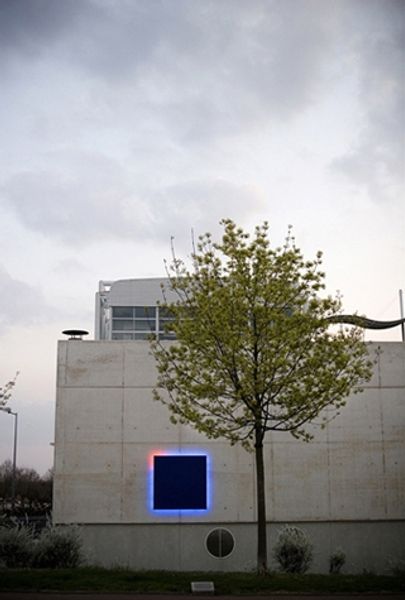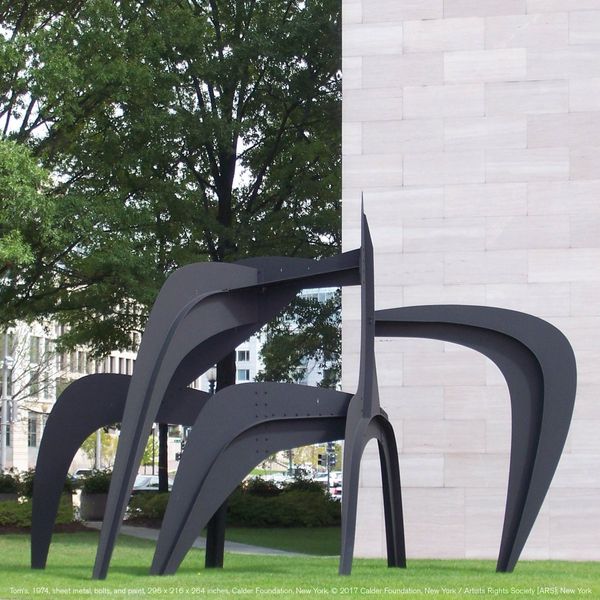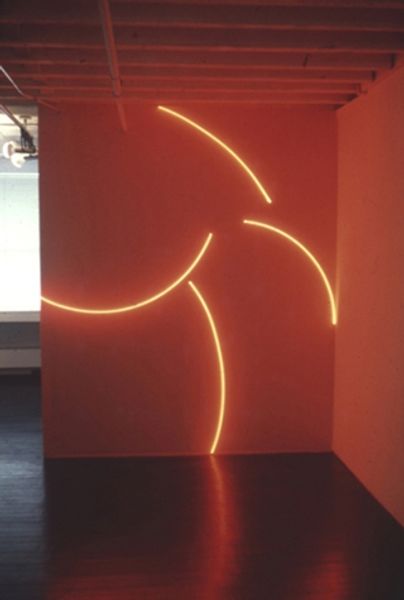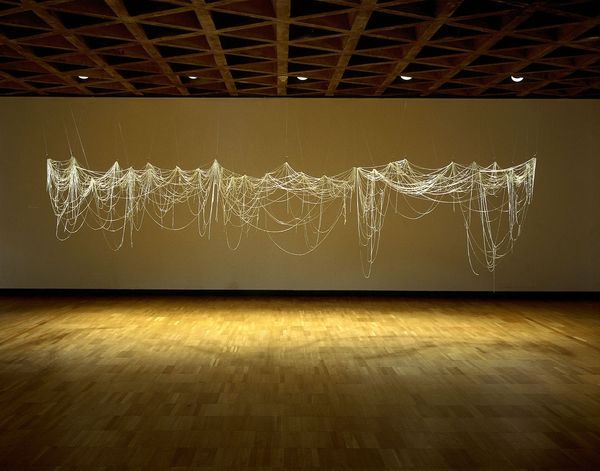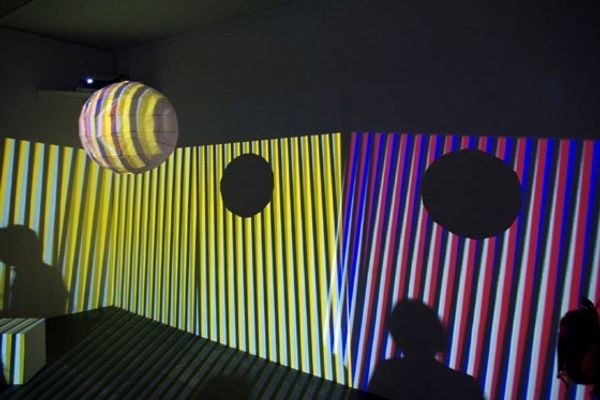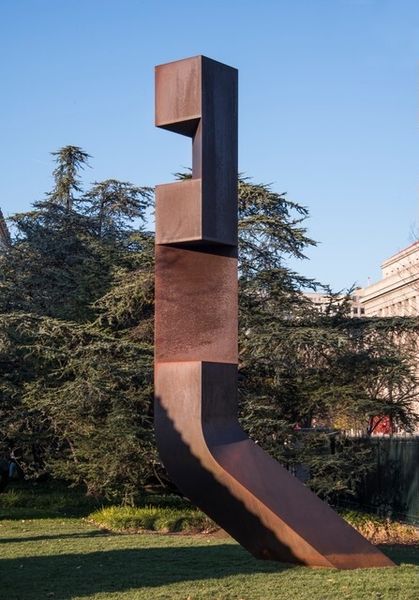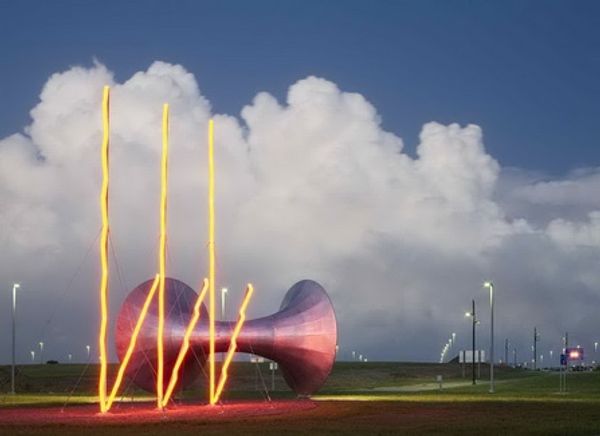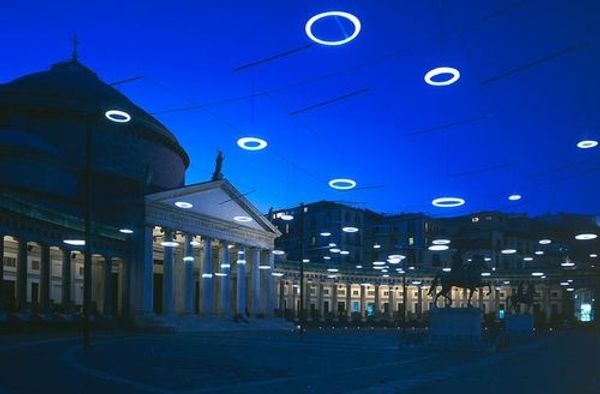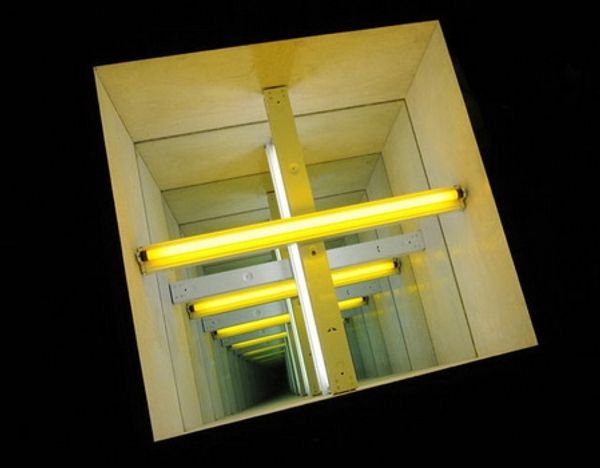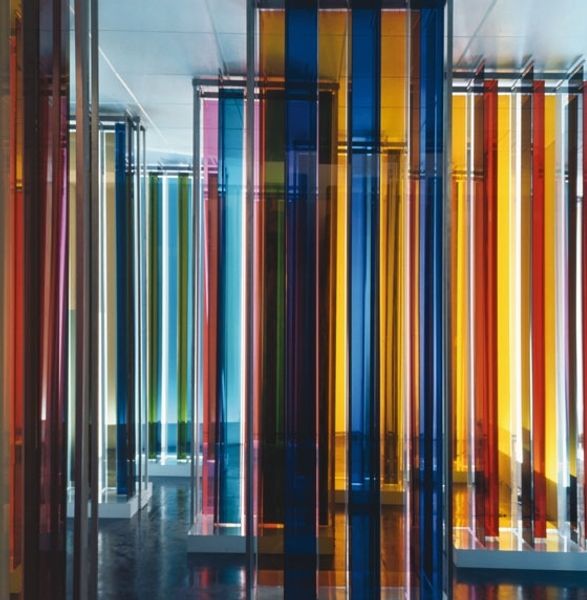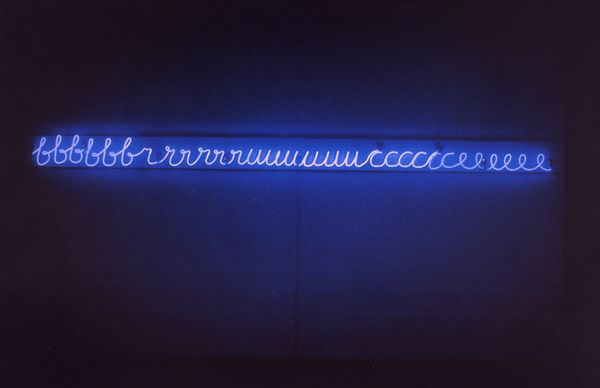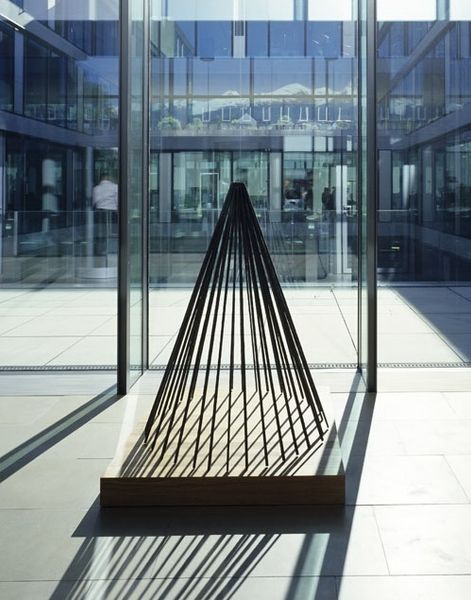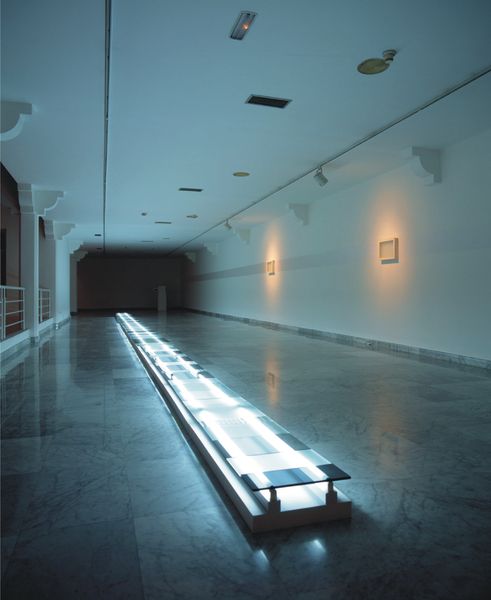
public-art, site-specific, installation-art
#
light-and-space
#
night
#
cyberpunk
#
urban landscape
#
urban
#
drawing with light
#
urban cityscape
#
public-art
#
light trail
#
light installation
#
geometric
#
column
#
urban art
#
site-specific
#
installation-art
#
light painting
#
abstraction
#
line
#
text in urban environment
#
modernism
#
building
Copyright: Stephen Antonakos,Fair Use
Editor: This is Stephen Antonakos's "Neon for Paris," created in 1983. It appears to be a site-specific installation, with neon tubing mounted on a classical building facade. The bright lines against the stone create a pretty stark contrast. What strikes you most about this piece? Curator: What interests me is how Antonakos uses this very modern medium – neon – against this very traditional architectural backdrop. Think about what Paris represented culturally in 1983. It's not just a city, it's a symbol of history, art, and a certain… resistance to purely commercial culture, don’t you think? Editor: Definitely. The city has always valued its artistic heritage. Curator: Right. So, consider the statement Antonakos might be making. Is he critiquing the city's embrace of modernity, or celebrating a new layer of artistic expression on top of the old? Or even how public art could affect public sentiment? Editor: That’s a great point. The neon almost feels like graffiti, a modern intervention on a historical monument. Do you think he’s making a comment on accessibility, bringing art out of galleries and into public spaces? Curator: Precisely. Public art in the 80s was becoming increasingly important – a challenge to traditional notions of who art is for, and where it should exist. And light art, specifically, had a huge impact on how public spaces could be inhabited at night, re-shaping our perceptions of the urban landscape. Editor: It’s interesting how a simple material choice can open up so many questions about a city’s identity and values. I’ll definitely look at site-specific art differently now. Curator: The best art always reflects and shapes its environment in equal measure. Seeing art as part of broader historical trends definitely helps to contextualize artworks.
Comments
No comments
Be the first to comment and join the conversation on the ultimate creative platform.

